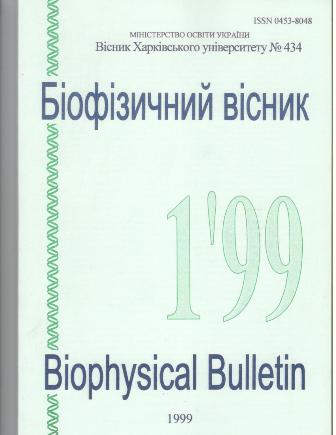QUANTUM CHEMICAL STUDY OF DECAMETHOXINUM AND RELATED DICATIONS
Abstract
The structural and electronic parameters of the dication of antimicrobial drug decamethoxinum and a set of model ammonium dications with various size of alkyl substituents at quaternary nitrogens were determined by means of AMI quantum mechanical calculations. It is shown that the most favourable conformation of the decamethoxinum dication in the absence of water solvent is an extended one with side substituents in the fraws-position with respect to the central chain and intramolecular solvation of ammonium groups by carboxyl oxygens. The positions of two centers of charge distribution in the decamethoxinum dication are close to the location of quaternary nitrogens while the analysis of the set of model dications revealed a strong dependence of the positions of such centers on type and size of the alkyl substituents. Possible correlations of the molecular parameters and the biological activity of ammonium salts are discussed.
KEY WORDS: diquaternary ammonium antimicrobial agents, decamethoxinum, quantum chemical calculations
Downloads
References
2. Волянский Ю. Л. Противомикробная активность новых азот- и фосфорсодержащих органических соединений, фенолов и ферроценов: Автореф. дисс.... д-ра мед. наук. - Москва, 1981.
3. Виевский А.Н. Механизмы биологического влияния катионных поверхностно-активных веществ. Москва. Б.И. 1990. 249 с.
4. Cooks R.G., Beynon J.H.,Caprioli R.M., Lester R.G. Metastable Ions. Elsevier. Amsterdam, 1973.
5. Szilagyi Z.,VekeyK.//Eur. Mass Spectrom. 1995. V.1. P.507-518.
6. Dewar M.J.S., Zoebisch E.G.Healy E.F.. Stewart J.J.P. // J Amer.Chem.Soc. 1985. V. 107. P.3902-3909.
7. Hull S.E., Karlsson R, Main P., Woolfson M.M. Dodson E.J. // Nature. 1978. V.275. P.206-207.
8. Gross D.S., Williams E.R. // J Am. Chem. Soc. 1995. V. 117. P.883-890
9. Szilagyi Z, Drahos L.,Vekey K. // J. Mass Spectrom. 1997. V.32. P.689-696.
10. Pashinskaya V.A., Kosevich M.V., Shelkovsky V.S., Czira G., Szilagyu Z... Vekey K. Abstr. of the 15th Inform. Meeting on Mass Spectrom., 4-6 May 1998, Budapest, Hungary. P. 86.
11. Денисенко В.П., Рудь В.П. В сб.: Физиологическая роль поверхностно-активных веществ. Черновцы. 1975. С. 40-41.
12. Гудзь О.В., Овчинников В.Г., Писько Г.Т., Смирнова НА., Тарасенко B.C. // Микробиол. журн. 1987. 49. С. 82-85.
13. Zakrzewska К., Lavery R, Pullman В. //Nucl. Acid Res. 1983. V. 11. P. 8825-8839.
Authors who publish with this journal agree to the following terms:
- Authors retain copyright and grant the journal right of first publication with the work simultaneously licensed under a Creative Commons Attribution License that allows others to share the work with an acknowledgement of the work's authorship and initial publication in this journal.
- Authors are able to enter into separate, additional contractual arrangements for the non-exclusive distribution of the journal's published version of the work (e.g., post it to an institutional repository or publish it in a book), with an acknowledgement of its initial publication in this journal.
- Authors are permitted and encouraged to post their work online (e.g., in institutional repositories or on their website) prior to and during the submission process, as it can lead to productive exchanges, as well as earlier and greater citation of published work (See The Effect of Open Access).




